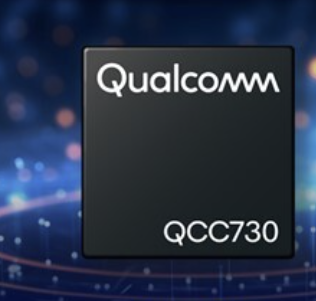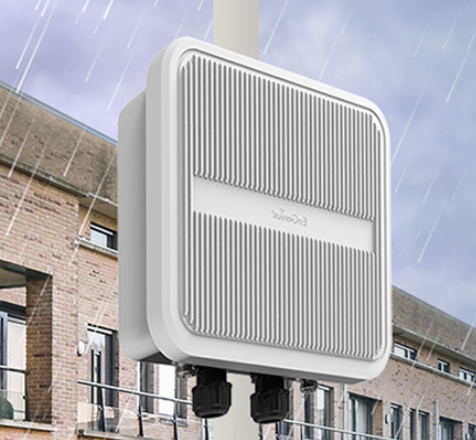
By Adlane Fellah, Senior Analyst & Founder, Maravedis

We were going to publish our own Wi-Fi predictions for 2023 but our partners from Maravedis beat us to it and did such a great job that we have nothing substantial to add. Here’s Adlane Fellah’s top predictions – enjoy.
Christmas is coming, the goose is getting fat, and telecom analysts are publishing their predictions for 2023. For the world economy, 2022 has been a tough year. The combined hits from Russia’s invasion of Ukraine, China’s COVID-19 lockdowns, and high inflation have deeply impacted consumers and businesses. For Wi-Fi, though, 2022 has been a rather good year with more innovation, more spectrum, and more momentum than ever. The calendar year has many pitfalls, but we want to share some of our top ten predictions for Wi-Fi in 2023.
Prediction 1: Wi-Fi 6/6E Continues Its Fast Market Penetration
Growing to a 500 million device ecosystem in just two years, Wi-Fi 6 was the fastest and most successful launch in Wi-Fi history. There can be no question that Wi-Fi 6 delivers significant KPI improvements, particularly high throughput, reduced latency, and better performance in crowded environments.
The great adoption of Wi-Fi 6/6E will continue despite the gloomy economic environment, driven by many features of the standard and its ability to access additional spectrum in the 6 GHz band via the 6E extension. Today, fifty-five countries—including those of the EU—have opened up (at least partially) the 6 GHz band for unlicensed use, and six additional countries are currently considering it. Further, others who have already adopted 6 GHz are considering extending the range to the entire band.
The huge increase in video-heavy traffic puts new burdens on capabilities that are required of a commercial Wi-Fi network, and that will drive investment in new technologies. Fiber broadband deployments will continue to expand in most developed and developing markets, creating a need for upgrade of home Wi-Fi networks in order to pass on the increased bandwidth all the way to the device.
Prediction 2: Wi-Fi 7 Earlier Than Expected
Wi-Fi 7 is designed to use all of this newly available bandwidth, with features including 320 MHz wide channels, true multi-band/multi-radio Layer 2 carrier aggregation, and multi-AP coordination. In terms of the timeline, the IEEE expects board approval by May 2024, with certified Wi-Fi 7 devices entering the market from 2024 onwards. Chipsets for Wi-Fi 7 have been already available for several months, and routers will continue to be released during 2023 following TP Link, H3C, and IO by HFCL 2022 releases. We can also expect Wi-Fi 7 phones to be released at the Mobile World Congress at the end of February 2023. In 2023, we will see early trials of Wi-Fi 7 in different live deployment environments, and the Wireless Broadband Alliance members will be some of the first to do so.
Prediction 3: Supply Chain Issues
Although with shorter backlogs, we still expect supply chain issues to remain for access points and switches that began during the pandemic to last through 2023. Global political unrest, a lack of raw materials, and rising fuel and energy costs are the top reasons supply chain challenges will continue in 2023. The recent lockdowns in China will also contribute to maintaining uncertainty in the IT supply chain. Despite these challenges, the backlog will decrease from 5-6 months to 2-3 months, and by the end of 2023 to 6 weeks—if no major new events occur to again disrupt the supply chain.
Prediction 4: Continuation of OpenRoaming™ Momentum
For the OpenRoaming initiative from the Wireless Broadband Alliance, 2022 has been quite rich. By December 2023, the WBA anticipates OpenRoaming to reach 5-6 million hotspots—from 1 million in Q1 2022—spanning a wide variety of public venues and already involving 2,000 companies. Deployments of Passpoint/OpenRoaming continue to rise as more brands and identity providers recognize the value of the federation to enable seamless connectivity access across different networks.
The main barrier to implementing Passpoint or OpenRoaming will be the ongoing shortage of IT resources from these organizations. On the technical side, the WBA will issue Release 4 which will include federated onboarding service (profile management and interfaces), network real time QoS, custom SLAs, membership service (analytics and reporting), compliance tooling and automation, and Capport (captive portal) user engagement.
Prediction 5: TIP OpenWiFi
As Meta axes around 13% of its workforce and moves away from connectivity, the short term impact on TIP OpenWiFi roadmap will likely be negative but in the long term, the rest of the community will take a more active role which is a good thing. TIP OpenWiFi has a new leader: Jack Raynor from Meta who said “Meta continues to support OpenWiFi and are assisting the project with the transition to the Community. Because of this and the fact that all of the core development and testing resources remain committed, OpenWiFi will not lose a step from a code release and testing perspective.” While many questions remain about the level of support Meta will continue to provide, testing and R&D are still ongoing.
TIP OpenWiFi will focus its R&D on a number of areas in 2023:
- Integrating the switching protocol stack to the current access point protocol, so that operators won’t need to run two separate systems.
- Production Deployments of existing OpenWiFi 6E devices
- Development of the OpenWiFi stack for Wi-Fi 7 Chipsets (initially Qualcomm IPQ9550 & 9570 based)
- OpenAFC Integration
- Development of OpenWiFi Outdoor Standard Power Access Points with optional GPS for AFC location reporting
- BLE/IoT Support optionally supporting the new Matter Interfaces
- “Easy Button” OpenRoaming Support. OpenRoaming is already supported but we intend to simplify its provisioning and operation
- Additional QoS refinement, including SCS for Metaverse-type experiences
There are currently thirty-five ongoing customer trials at various stages, and we expect some of them to turn into large commercial deployments in Q1 2023. The challenges with supply chain from the traditional AP suppliers represents another driver for TIP OpenWiFi interoperable AP providers.
Prediction 6: AFC
A spectrum database solution called an “automatic frequency coordinator” (AFC) is required for 6GHz outdoor and high-power indoor applications. The adoption of the 6GHz band for unlicensed use will continue to grow across the world, and more regulators will initiate their AFC processes.
At the time of writing, the Federal Communications Commission had already approved thirteen organizations to operate AFC services, and the number of commercially available Wi-Fi-6E-capable devices had reached 1,095 (of which the vast majority are PCs). We expect AFC to continue its momentum in 2023 with many more access points and devices supporting 6E. The expectation is that regulators in some countries—such as the U.S. and perhaps Canada—will approve initial AFC operators, and the first few standard power access points will ship in the market.
Moreover, other countries—such as Brazil and in Europe will continue to make progress in developing regulatory rules for AFC system operation. The Open AFC Software Group is a dedicated open-source community for the design, development, testing, and potential certification of AFC software for unlicensed services (e.g., Wi-Fi) in the 6 GHz band.
Prediction 7: Convergence Between Wi-Fi and 5G
Convergence and coexistence are always in our radar as use cases emerge that work optimally over multiple types of connectivity. The convergence between licensed and unlicensed technologies will continue to play a critical role in service providers’ current and future strategies (whether they admit it or not). There is a particular agreement and focus on convergence in enterprise settings, where many stakeholders believe Wi-Fi and 5G will coexist to support enhanced flexibility for enterprise services.
The year 2023 will continue to see the deployment of Wi-Fi 6 and 6E in enterprise campuses as well as more pilot projects in industrial environments in coexistence with some private 5G networks. Wi-Fi 6/6E and OpenRoaming, together with QoS and policies with ATSSS (Access Traffic Steering, Switching, and Splitting), will open opportunities for further HetNet convergence from carriers with 5G and private cellular and Wi-Fi.
Prediction 8: HaLow
HaLow is a technology using the IEEE 802.11ah standard; the Wi-Fi Alliance refers to it as “Wi-Fi HaLow.” HaLow has the advantage of operating in the sub-GHz radio frequency range (902MHz–926MHz)—much lower than traditional Wi-Fi (2.4 GHz)—and uses narrower channels than traditional Wi-Fi.
The WiFi Alliance only certified the Wi-Fi HaLow standard in October of 2021, despite the technology having been in development six years by then. Morse Micro, Newracom and Taixan Semiconductor currently offer HaLow chips. Morse Micro, has received AUD $140m (US$94.4m) in Series B funding which should give it a much-needed financial boost in a very competitive IoT wireless market.
HaLow looks better placed indoors (smart homes) and perhaps for campus coverage where the other flavors of Wi-Fi are already well entrenched. It remains to be seen if it can challenge those LPWAN protocols for outdoor applications that require only low bit rates, such as smart metering and environmental monitoring.
Prediction 9: Metaverse
Given that most of the metaverse will occur indoors, Wi-Fi will have a dominant role to play, underlining the importance of the 6 GHz spectrum and driving demand for Wi-Fi 6E, Wi-Fi 7, and beyond. The metaverse requires a predictable and consistent low level of latency, low jitter, and very high throughputs to support the rendering at both the local and wireless levels—capabilities that next generation (deterministic) Wi-Fi delivers.
Various analysts predict 2030 to be the year of the metaverse. There is no doubt that more operators will formulate a metaverse strategy in 2023 with AR/VR devices and applications continuing to penetrate our everyday lives.
Prediction 10: Wi-Fi Monetization
All the data traffic and innovations need to be monetized effectively. Recent years have seen more operators succeed in adopting multiple monetization strategies based on the same networks and traffic flows. The top three monetization strategies that will be prominent in the coming year will be: (1) marketing and analytics; (2) cellular traffic offloading services; and (3) location-based services. However, the availability of devices and integration with licensed spectrum networks will remain key barriers.
/Adlane Fellah, CEO Maravedis.
I want to thank the Wireless Broadband Alliance, Intel, NetExperience, Extreme Networks and TIP OpenWiFi for sharing their insights with me.









